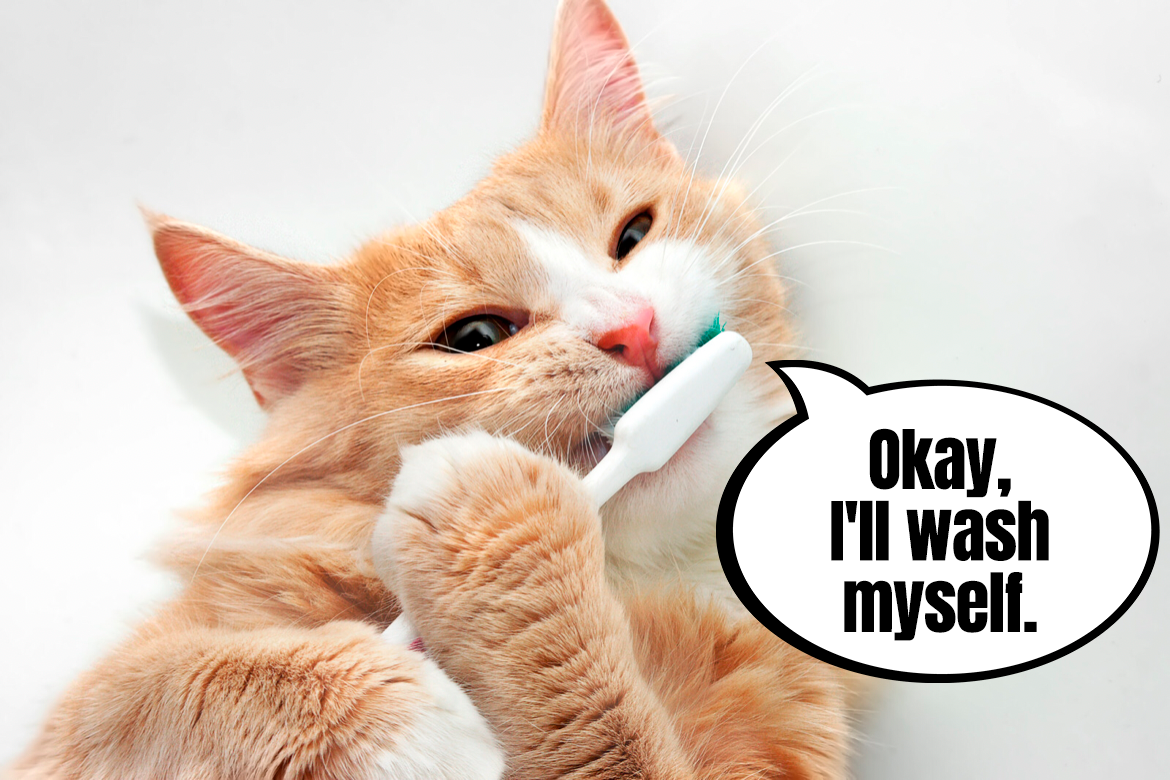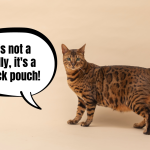Do you find time for oral hygiene in your cat’s everyday care? While it’s natural for us, humans, to regularly brush our teeth, we often forget that our pets might also need help getting their teeth cleaned. Cats, as obligate carnivores, when fed big chunks of raw meat or a raw diet (like BARF) are getting most of the plaque off while eating. It’s not safe to assume, however, that it’s enough to feed them meat or, even worse, use dry food as a solution for healthy teeth. What can you do, dear fabCat, to correctly care for your kitties dental health? When should you visit a cat dentist?
Cat teeth: made for tearing, not chewing
If you look into your cat’s mouth, you’ll quickly realise their teeth structure is completely different from what we’re used to seeing in our own mouths. The distinctive structure of cats’ teeth is directly related to the fact that our domestic furry friends are obligate carnivores and their teeth are made for tearing food, not chewing it. As adults, cats have 4 healthy, sharp canine teeth, 12 incisors, 10 premolars and 4 molars.
Oral hygiene for cats: is a good diet enough?
A commonly repeated myth about how dry food is good for cleaning cats’ teeth is actually quite harmful – in reality, it’s the dry food that can make your cat’s teeth even worse. To test it out, put your hand into a bag of dry cat food, stir it up and pull the hand out. Is it sticky and covered with a greasy, powdery residue? That’s what sticks to your cat’s teeth with every bowl of dry food they eat. Seeing as can also have a lot of carbohydrates and sugars, using dry food as the main diet can lead to some serious problems with your cat’s teeth and overall health.
Wet food with high meat contents, as well as raw diets like BARF or Whole Prey are much better for cats’ teeth. Even cat dentists say it’s not always necessary to use dedicated oral hygiene products for cats everyday if you’re feeding raw, unless there’s a need to remove the plaque more effectively. However, don’t take this for granted – it’s useful to ask your veterinarian to check your kitty’s mouth for possible problems, so you can act quickly and prevent more serious issues. Some statistics say that even 70% of cats after their 2nd year of life will need dental care and professional teeth cleaning, with more serious cases requiring teeth extraction.
Worrying symptoms that should send you to the cat dentist
Bacteria that feed on food residue can cause many problems with gums and teeth, but also with internal organs. Cat’s mouth isn’t used just for eating: it’s the beginning of the digestive tract and the respiratory system, so all the bacteria that can grow in the mouth can go further, causing issues with kidneys, liver, heart or general health and immunity problems.
If you’re not sure if your cat requires dental help, the first step would be to look into their mouth. Redness around the teeth, visible swelling, bleeding gums, as well as broken or chipped teeth are necessary to check with a cat dentist. Another symptom would be an unpleasant smell from the mouth: bad breath is often the first sign of dental problems. A quite interesting sign of possible issues would be teeth grinding. For cats it might point to malocclusion or be a way of easing pain and discomfort.
Brushing cats’ teeth, step by step
Cats change their baby teeth to permanent teeth around 4-7 months of age. Learning the ins and outs of oral hygiene should be started even earlier, first by getting the kitten used to being touched around the mouth, gums and teeth. The faster they learn it’s not harmful, the easier it will be in the future to actually clean the teeth properly. Why is it so important?
Cats are not known for being submissive, if there’s any kind of grooming and care involved and unless they’re used to a particular kind of touch (e.g. being used to brushing), they can protest. A lot! At the same time, it’s the active oral hygiene, which is brushing, that gives the best results. There are special, pet-safe products which you can buy at the vet clinic. To use them, you need to spread them around the teeth and gums by gently rubbing with a pet toothbrush, a gauze wrapped around your finger, a Q-tip or dental wipes soaked with a teeth cleaning gel for cats.
Careful! Toothpaste that’s safe for humans is toxic for cats – never use it to brush your pets’ teeth.
An alternative to active oral hygiene would be a passive one: less effective, but one that allows to take care of the cats that are particularly stubborn and don’t let you brush their teeth. This category would include the aforementioned meat pieces which make the cat work to get through them, as well as dedicated products that you add to cat food or water, gently dissolving the excess plaque.
Why is it worth it to take care of your kitty’s teeth?
By using the right products to help your cat, you can prevent or largely decrease the risk of them having gum inflammations and other dental issues. Any untreated changes within the mouth carry a risk of weakening the entire organism and for cats, they’re generally painful even without more serious issues. As responsible Carers we should do anything, to effectively avoid such unpleasant situations.
Are you, dear fabCats, using dedicated products to clean your cats’ teeth? How did you manage to convince them to get used to the brushing and how often do they let you rub a gel on their teeth? Be sure to let us know in the comments and if you haven’t been to a dentist check up with your cat yet, remember to ask your vets about it during your next visit.




